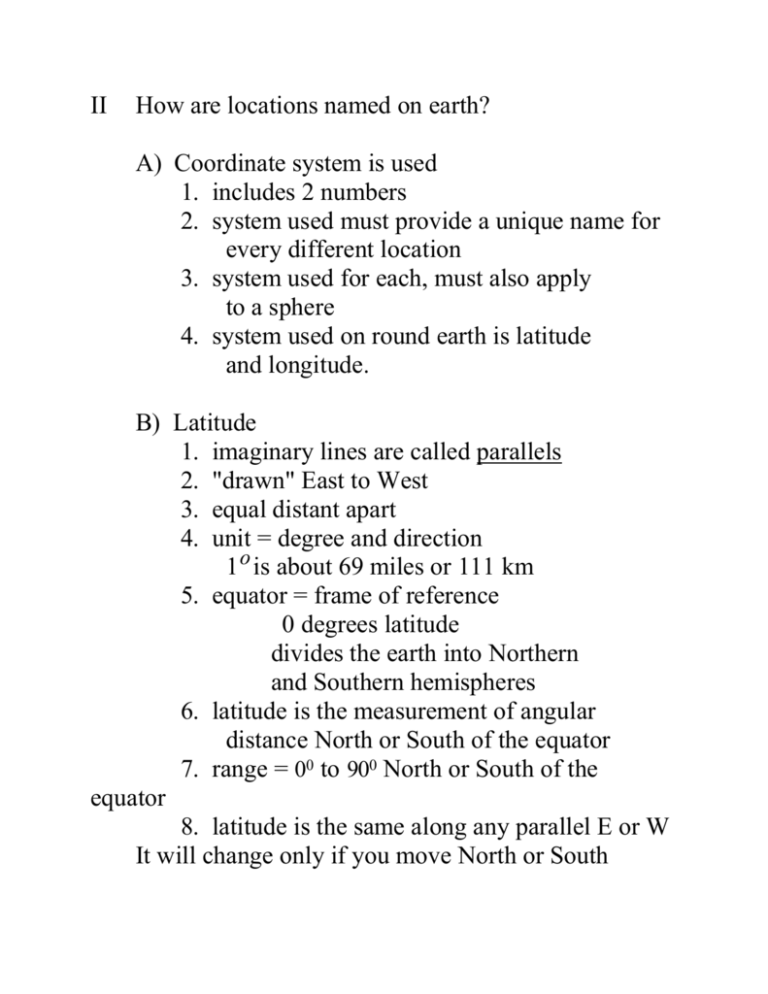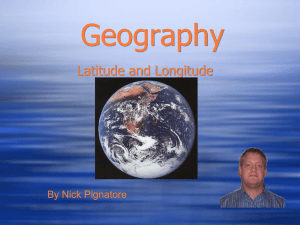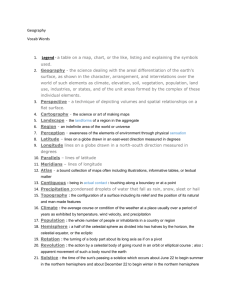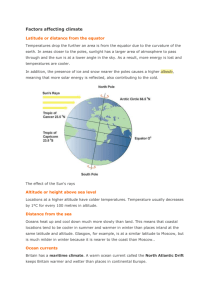meridians
advertisement

II How are locations named on earth? A) Coordinate system is used 1. includes 2 numbers 2. system used must provide a unique name for every different location 3. system used for each, must also apply to a sphere 4. system used on round earth is latitude and longitude. B) Latitude 1. imaginary lines are called parallels 2. "drawn" East to West 3. equal distant apart 4. unit = degree and direction 1 o is about 69 miles or 111 km 5. equator = frame of reference 0 degrees latitude divides the earth into Northern and Southern hemispheres 6. latitude is the measurement of angular distance North or South of the equator 7. range = 00 to 900 North or South of the equator 8. latitude is the same along any parallel E or W It will change only if you move North or South C) Longitude 1. imaginary lines called meridians 2. "drawn" N to S, and meet at the poles 3. not equal distant apart, closest at the poles, furthest at the equator 4. 10equals approximately 69 miles or 111 km only at the equator 5. Prime Meridian = frame of reference, 00 longitude. Drawn through Greenwich, England. Divides the earth into East and West hemispheres. 6. Longitude measures angular distance E or W of the Prime Meridian. 7. range is 00 to 1800East or West 8. longitude does not change if you move N or S, only when you move E or W see page 57 D) How was latitude determined? 1. latitude is based on celestial observations of the pole star ---- North latitudes use Polaris also known as the North Star The South latitudes use Sigmus Octanus 2. A sextant measures a stars altitude above the horizon 3. altitude of the pole star = your latitude 4. if you move North, the altitude of Polaris increases, so latitude increases 5. if you move East or West, the altitude of the pole star (Polaris) remains the same and so does the latitude E) How was longitude determined? 1. longitude is based on celestial observations of the sun 2. the sun indicates the time of day. Solar noon occurs when the sun is on the observers celestial meridian 3. chronometer is a clock which indicates GMT (Greenwich Mean Time) 4. longitude = 15 degrees times the difference between you and GMT ---if you are ahead of GMT you are East ---if you are behind GMT you are West 5. the 24 time zones are 15 degrees apart











